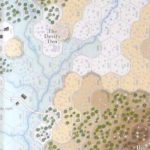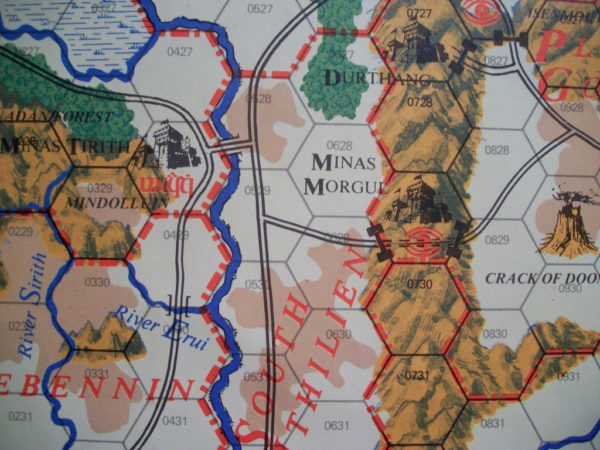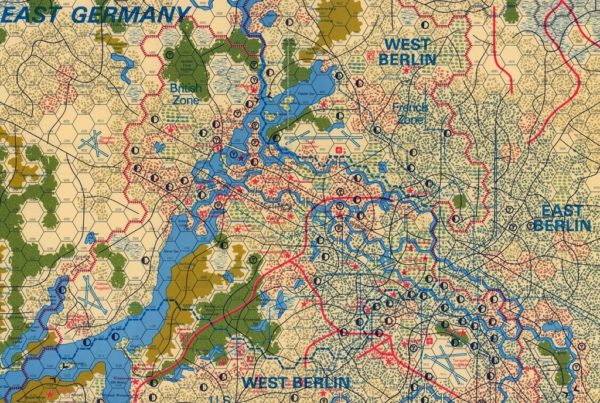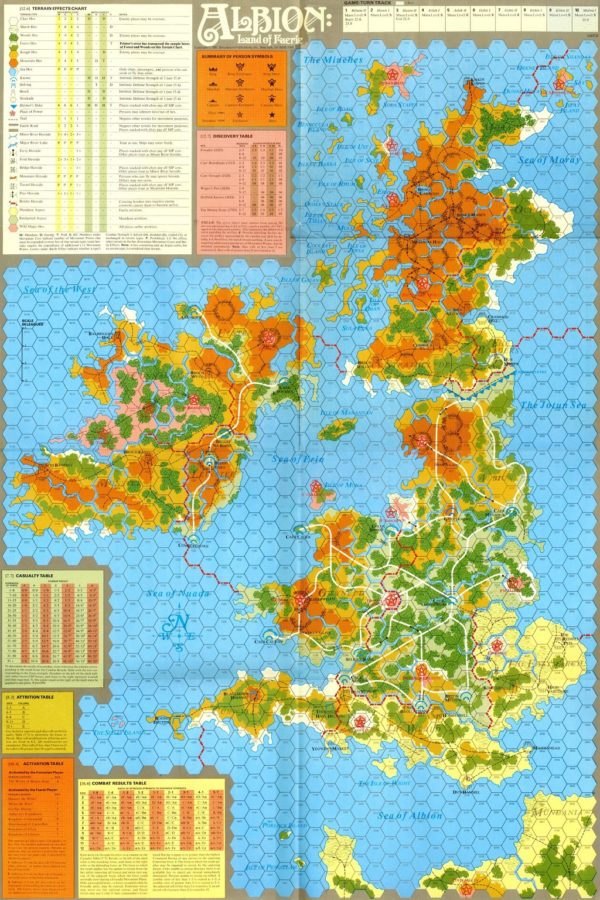Hex maps are a staple of games, a way of describing a chaotic surface in a way that facilitates play by abstracting that surface to a degree that’s easier and simpler than it would otherwise be. As an old-time gamer, I confess to a soft spot for hex maps, whether it’s the simplicity of the terrain as modelled in the original Panzer Blitz and Panzer Leader, or the use of hexagons to show distance in above-ground maps for roleplaying game settings like The World of Greyhawk (TSR) and The Wilderlands of High Adventure (Judge’s Guild).
At their best, hex maps combine an ease-of-use with a wealth of detail that makes them both functional as game maps while simultaneously conveying that functionality in a visually-pleasing fashion that makes clear what’s being represented.
By way of example, consider the Battle of Gettysburg and the challenges it presents to a wargame designer. How best to represent key areas like Devil’s Den, an area littered randomly with boulders and trees, and overlooked by Little Round Top? The somewhat unique character of the terrain gave the struggles in that area a different feel and something to be captured on a map as something more than a rough terrain hex. The same can be said for many unique features, either specific to a particular battlefield or to a theater of operations, be it the bocage of Normandy or the factories of Stalingrad, to name but a couple.
Which brings us to Redmond A. Simonsen, one of my absolute favorite map designers whose credits span a myriad genres of wargames. I’m not sure which of his maps I fell in love with first, but most span the same era (1977-1981, the heyday of Simulations Publications, Inc. (SPI)).
I think that the first map I encountered was from SPI’s War of the Ring that I owned and used as a source of inspiration for my early forays into mapmaking. I found the bright colors and surprising level of detail perfectly captured the epic struggles with a level of additional detail that marked certain areas as uniquely important, whether it was for the individual members of the Fellowship or the armies of Mordor. After that came the discovery of the Dragonquest roleplaying game and the unabridged script to Monty Python and the Holy Grail at my local library, though I’m not sure that I realized at the time that the Dragonquest maps were by Mr. Simonsen. The other map that really marks the cornerstones of my appreciation for Redmond Simonsen was the map that he did for Berlin ’85: The Enemy at the Gates for Strategy & Tactics magazine #79. The map is incredibly dense and confusing, as befits a densely-populated urban area, but when you focus on an individual hex or when placing the counters for the game, it’s remarkably cohesive and clear. Many older games are now out-of-print or unavailable, but the Internet Archive now has a collection of SPI’s Ares Magazine with many of the great games that came with that magazine including the fantastic map that’s part of issue #11, Albion, Land of Faerie. I’d highly recommend checking it out and, for completely different reasons, issue #2 with the The Wreck of the B.S.M. Pandora.
Here’s some example of Redmond Simonsen’s map work:




